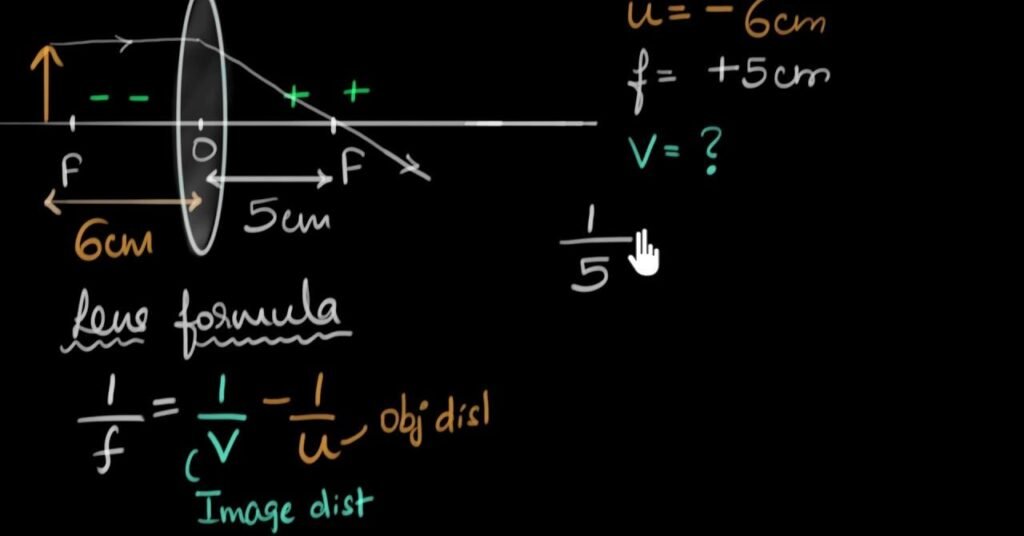Are you curious to know what is lens formula? You have come to the right place as I am going to tell you everything about lens formula in a very simple explanation. Without further discussion let’s begin to know what is lens formula?
The lens formula is a fundamental concept in optics, providing a mathematical foundation for understanding how lenses form images. In this article, we’ll unravel the intricacies of the lens formula, exploring its significance, applications, and the key parameters it encompasses.
What Is Lens Formula?
The lens formula is a mathematical expression that establishes a relationship between the focal length (f), object distance (u), and image distance (v) for a lens. Represented as:
(1/f) = (1/u) + (1/v)
This formula serves as a cornerstone in optics, enabling precise calculations and predictions regarding image formation by lenses.
What Is Lens Formula In Physics:
In the realm of physics, the lens formula is a vital tool within the domain of optics. It forms the basis for understanding how light interacts with lenses, guiding physicists in predicting and analyzing image characteristics. This mathematical relationship is instrumental in the development of optical instruments.
What Is Lens Formula Class 12:
For Class 12 students, the lens formula marks a pivotal topic in the study of optics. This advanced exploration involves applying the formula to solve problems related to image formation, magnification, and other lens properties. It forms an integral part of the physics curriculum, laying the groundwork for more intricate optical principles.
What Is Lens Formula Class 10:
Even at the Class 10 level, students are introduced to the fundamentals of optics, including the lens formula. This early exposure aims to build a foundational understanding of how lenses shape light and form images. The lens formula acts as a stepping stone for more advanced studies in later grades.
Lens Formula With Example:
To illustrate the practical application of the lens formula, consider a convex lens with a focal length (f) of 10 cm. If an object is placed 20 cm away from the lens (u=−20cm), we can employ the lens formula to find the image distance (v):
1/10 = −(1/20) + (1/v)
By solving this equation, we can determine the value of v and gain insights into the characteristics of the formed image.
Magnification Of Lens Formula:
Magnification (m) is a key parameter associated with the lens formula, defined as the ratio of the image height to the object height. The magnification formula is given by:
m=−v/u
Understanding magnification is crucial for assessing the size and orientation of images formed by lenses.
Power Of Lens Formula:
The power (P) of a lens is inversely proportional to its focal length and is expressed by the formula:
P= 1/f
This parameter is particularly significant in optics, playing a crucial role in designing corrective lenses for vision correction.
Mirror Formula:
In the context of mirrors, the mirror formula parallels the lens formula. For a concave mirror, the mirror formula is represented as:
1/f =(1/u) + (1/v)
Both formulas share a similar structure, highlighting the symmetry between image formation by lenses and mirrors.
Lens Formula Derivation:
The lens formula is derived by applying the laws of refraction to the formation of images by lenses. A meticulous derivation involves considering the geometry of the lens and the path of light rays through it. The final formula encapsulates the intricate relationship between object distance, image distance, and focal length.
Conclusion:
In conclusion, the lens formula stands as a cornerstone in the field of optics, offering a precise mathematical representation of how lenses shape light to form images. Whether you’re a student navigating the basics of optics or a researcher designing advanced optical systems, a solid understanding of the lens formula is indispensable for unraveling the mysteries of light and image formation.
FAQ
What Is Lens And Mirror Formula?
Lens formula – 1/v-1/u=1/f. Mirror formula – 1/v+1/u=1/f.
What Is Lens Making Formula?
1 f = ( n − 1 ) ( 1 R 1 − 1 R 2 ) where, f is the focal length (half the radius of curvature) n is the refractive index of the material used. R1 is the radius of curvature of sphere 1.
What Is Magnification Formula?
The magnification equation is M= Hi/Ho = -Di/Do where M is the total magnification, Hi is the height of the image, Ho is the height of the object, and the negative sign indicates that the image projected is the inverse of the object.
What Is Lens Class 10?
A lens is a piece of transparent glass which concentrates or disperses light rays when passes through them by refraction. Due to the magnifying property, lenses are used in telescopes and other magnifying devices.
I Have Covered All The Following Queries And Topics In The Above Article
What Is Lens Formula With Example
What Is Lens Formula In Physics
What Is Lens Formula Class 12
What Is Lens Formula Class 10
Magnification Of Lens Formula
Power Of Lens Formula
Mirror Formula
Lens Formula Derivation
What Is Lens Formula






